 Above: Dragons in Beijing Ancient Observatory. Photo gallery below.
Above: Dragons in Beijing Ancient Observatory. Photo gallery below.Beijing Ancient Observatory
PICTORIAL - STARS AND THE RED SUN
Beijing Ancient Observatory is located at the corner of main avenue and East Ring-2. It was built in 1442 during the Ming Dynasty with the purpose to explore and observe the heavens. Observation Deck has eight large bronze instruments, pre-telescopic, by Qing Dynasty.
Observatory proves that Chinese people were curious and had the will to peek into the unknown.
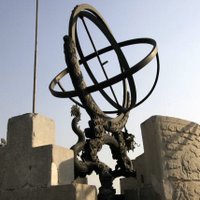
Picture:
Beijing Ancient Observatory
Equatorial Armilla. Made in 1673 (Qing Dynasty) and designed primarily for measuring true solar time as well as right ascension difference and declination of celestial bodies.
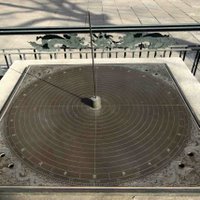
Picture:
Beijing Ancient Observatory
The Square Table. Designed by Guo Shoujing, a Chinese astronomer of the Yuan Dynasty (1279-1368), for the purpose of determining azimuth of celestial bodies by the equal altitude method and can also be used as protractor.
-- BeijingMan
______________________________
Below pictures were taken at Beijing Ancient Observatory, located in the corner of Beijing main avenue and East Ring-2. Click to enlarge.
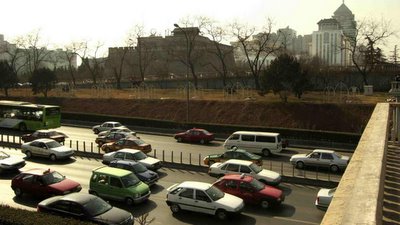 Above-1: Beijing Ancient Observatory.
Above-1: Beijing Ancient Observatory.Seen from JianGuoMen Bridge.
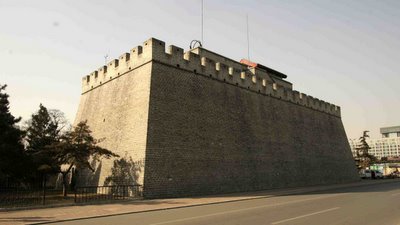 Above-2: Beijing Ancient Observatory.
Above-2: Beijing Ancient Observatory.On top of Observation Deck there are eight large bronze instruments, by Qing Dynasty, and a small shop house. Behind Observatory Deck building there are the exhibition rooms and yard, and a small park (left).
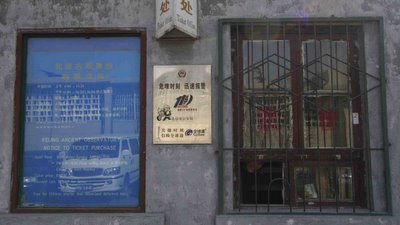 Above-3: Beijing Ancient Observatory.
Above-3: Beijing Ancient Observatory.Ticket Sales Office. Ticket price 10RMB (=1EUR or 1,3USD), service was friendly. Official information:
- "Free for children shorter than 100cm and for deformed man"
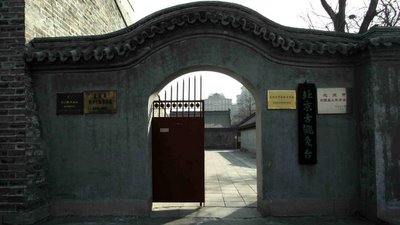 Above-4: Gate into Beijing Ancient Observatory.
Above-4: Gate into Beijing Ancient Observatory.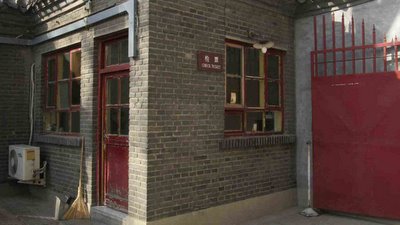 Above-5: Beijing Ancient Observatory.
Above-5: Beijing Ancient Observatory.- "Check Ticket Office", I saw only two other visitors
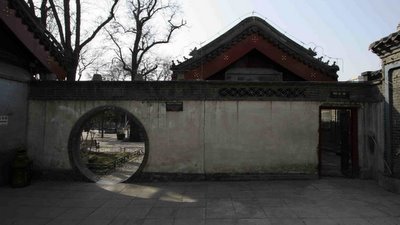 Above-6: Beijing Ancient Observatory.
Above-6: Beijing Ancient Observatory.- Choice of entrance
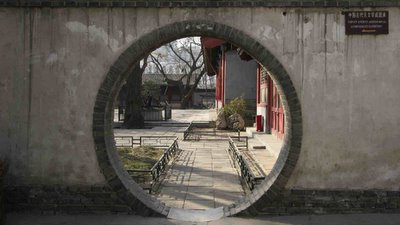 Above-7: Beijing Ancient Observatory.
Above-7: Beijing Ancient Observatory.- The sign: "China's Ancient Astronomical Achievements Exhibition"
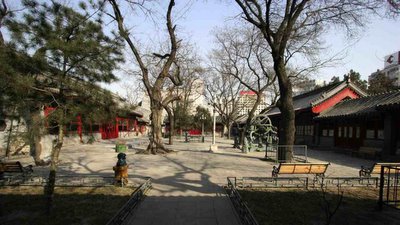 Above-8: Beijing Ancient Observatory.
Above-8: Beijing Ancient Observatory.- Three exhibition halls: left, front and right
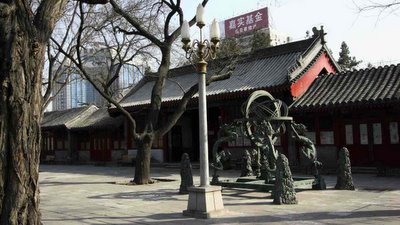 Above-9: Beijing Ancient Observatory.
Above-9: Beijing Ancient Observatory.Official explanation for playful dragons holding the instrument: "The Armillary Sphere. Made in the 4th year during the reign of Zhengtong (1439) of the Ming Dynasty and designed for the coordination of celestial bodies. Originally kept in Beijing, it was moved to the Purple Mountain Observatory in Nanjing in 1931."
 Above-10: Beijing Ancient Observatory.
Above-10: Beijing Ancient Observatory.In front of the main exhibition hall: "Simplified Armilla. Made in 1439 (Zhengtong reign of Ming Dynasty) and designed for the same purpose as Armillary Sphere, for the coordination of celestial bodies. It has more simply structure and operation. It was moved to the Purple Mountain Observatory in Nanjing in 1933."
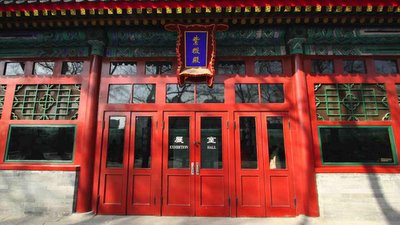 Above-11: Beijing Ancient Observatory.
Above-11: Beijing Ancient Observatory.The main exhibition hall.
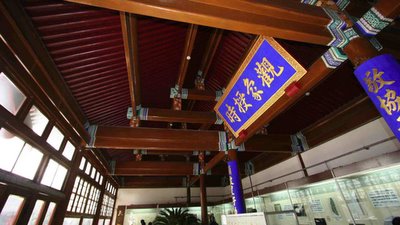 Above-12: Beijing Ancient Observatory.
Above-12: Beijing Ancient Observatory.Inside the main exhibition hall.
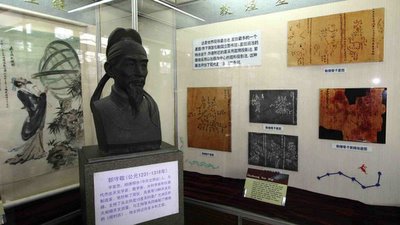 Above-13: Beijing Ancient Observatory.
Above-13: Beijing Ancient Observatory.Inside the main exhibition hall.
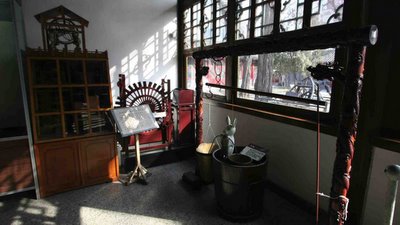 Above-14: Beijing Ancient Observatory.
Above-14: Beijing Ancient Observatory.Inside the main exhibition hall.
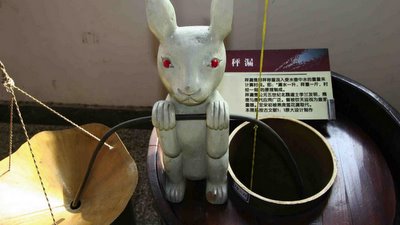 Above-15: Beijing Ancient Observatory.
Above-15: Beijing Ancient Observatory.Inside the main exhibition hall.
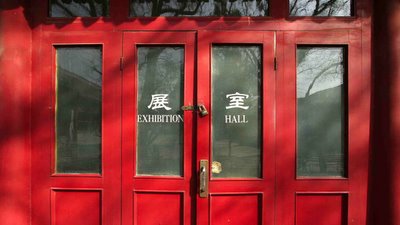 Above-16: Beijing Ancient Observatory.
Above-16: Beijing Ancient Observatory.Another exhibition hall.
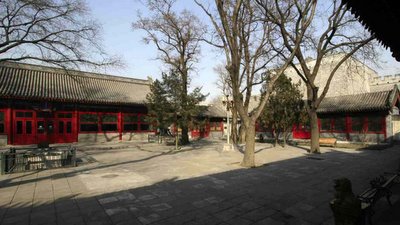 Above-17: Beijing Ancient Observatory.
Above-17: Beijing Ancient Observatory. Above-18: Beijing Ancient Observatory.
Above-18: Beijing Ancient Observatory.To the washroom.
 Above-19: Beijing Ancient Observatory.
Above-19: Beijing Ancient Observatory.- Behind the exhibition hall, a taikonaut element with round observation window...
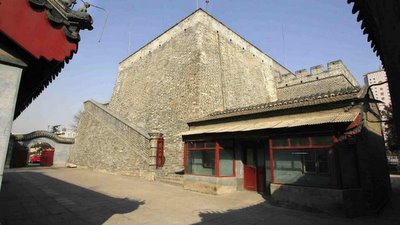 Above-20: Beijing Ancient Observatory.
Above-20: Beijing Ancient Observatory.Observation Deck up there, 14 meters above the street level.
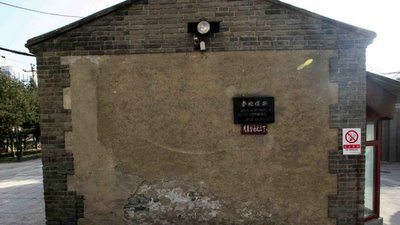 Above-21: Beijing Ancient Observatory.
Above-21: Beijing Ancient Observatory.The writings on the wall.
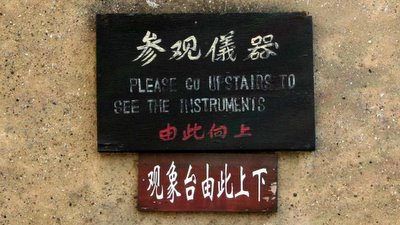 Above-22: Beijing Ancient Observatory.
Above-22: Beijing Ancient Observatory.- Upper: "Please go upstairs to see the instruments"
- Lower: "Observation terrace from here up and down"
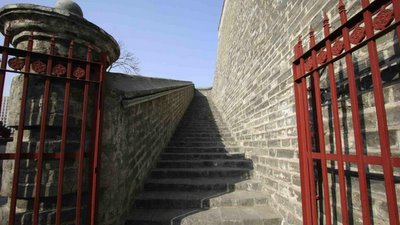 Above-23: Beijing Ancient Observatory.
Above-23: Beijing Ancient Observatory.I turned and went the steps up.
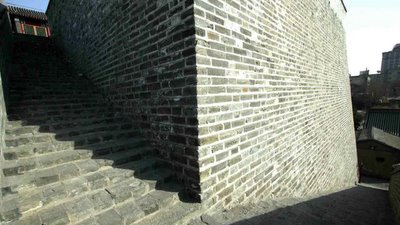 Above-24: Beijing Ancient Observatory.
Above-24: Beijing Ancient Observatory.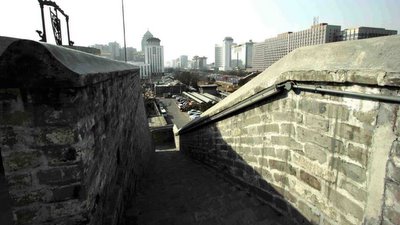 Above-25: Beijing Ancient Observatory.
Above-25: Beijing Ancient Observatory.Rewarding view from the top towards 38 kilometers long main avenue.
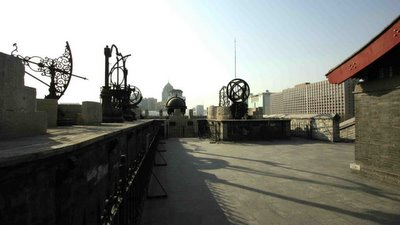 Above-26: Beijing Ancient Observatory.
Above-26: Beijing Ancient Observatory.The Observation Deck has eight bronze instruments.
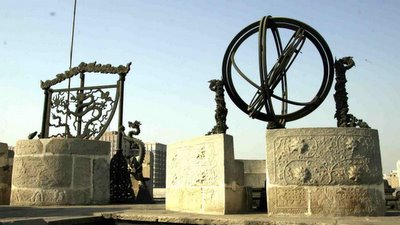 Above-27: Beijing Ancient Observatory.
Above-27: Beijing Ancient Observatory.Left: "The Quadrant. Made in 1673 (Qing Dynasty) and designed for measuring altitudes or zenith distances of celestial bodies."
Right: "The New Armilla. Made in 1744 (Qing Dynasty) and designed primarily for measuring true solar time as well as ascension difference and declination of celestial bodies."
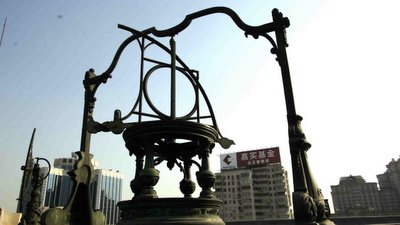 Above-28: Beijing Ancient Observatory.
Above-28: Beijing Ancient Observatory."The Azimuth Theodolite. Made in 1715 (Qing Dynasty) and designed primarily for measuring azimuths and altitudes of celestial bodies."
 Above-29: Beijing Ancient Observatory.
Above-29: Beijing Ancient Observatory.Shop house on the Observation Deck.
 Above-30: Beijing Ancient Observatory.
Above-30: Beijing Ancient Observatory.Service in the shop was very friendly.
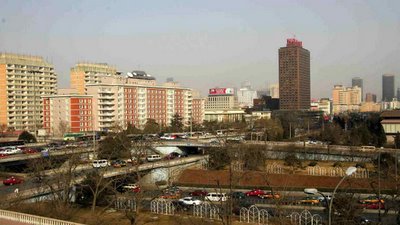 Above-31: Beijing Ancient Observatory.
Above-31: Beijing Ancient Observatory.View towards East, far away there is Beijing WTC. The tower with red on top is CITIC Tower, the earliest foreign trade building in Beijing and China. Left, JianGuomenWai Diplomatic Residence block.
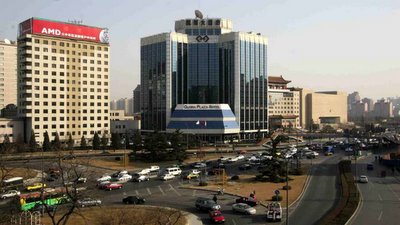 Above-32: Beijing Ancient Observatory.
Above-32: Beijing Ancient Observatory.View towards South, blue building is Gloria Plaza Hotel. Right side of it is Beijing parliament building.
I stayed at Gloria Plaza Hotel when visiting Beijing first time, Christmas 1992. From hotel's gym I had direct view to Beijing Ancient Observatory. I biked around Beijing and the weather was cold. In 1992 slaughtered pigs were transported on bicycles to shops and restaurants. Gloria Plaza Hotel had a short life, it was put down in 2011.
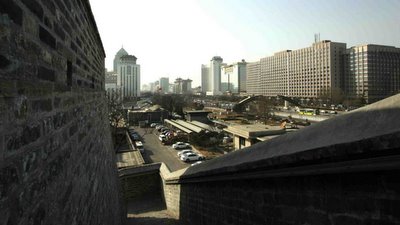 Above-33: Beijing Ancient Observatory.
Above-33: Beijing Ancient Observatory.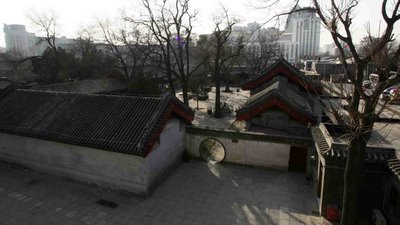 Above-34: Beijing Ancient Observatory.
Above-34: Beijing Ancient Observatory.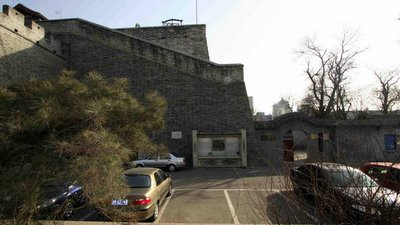 Above-35: Beijing Ancient Observatory.
Above-35: Beijing Ancient Observatory.Beijing Ancient Observatory
+ Not only for astrologs to enjoy this place
+ Amazing instruments were 100s of years old
+ Easy to find at the corner of main avenue and Ring-2
+ Refreshing experience to walk around, to feel the history
**** OK PHOTO TARGET FOR A FEW HOURS VISIT ****
© BeijingMan 2022


No comments:
Post a Comment